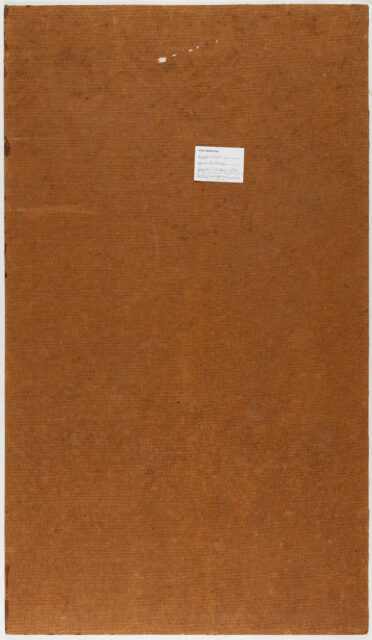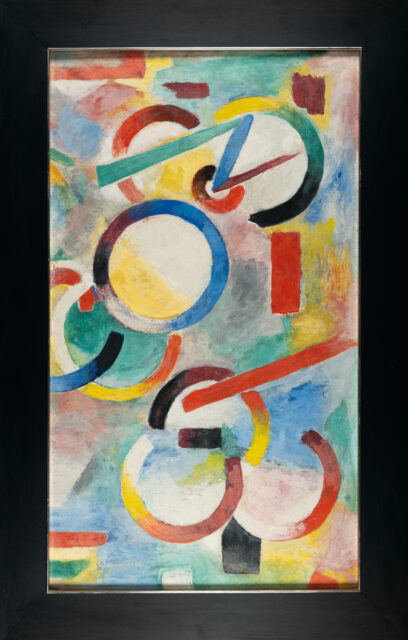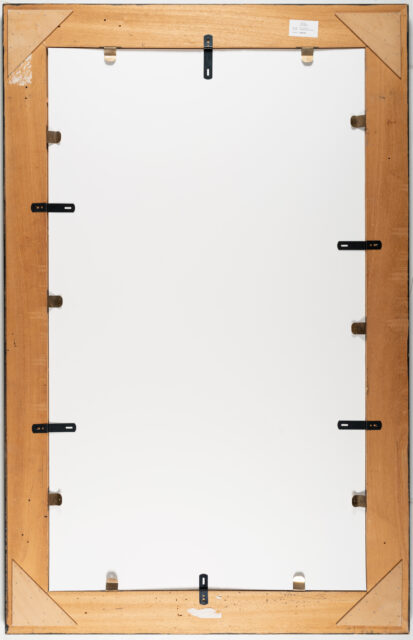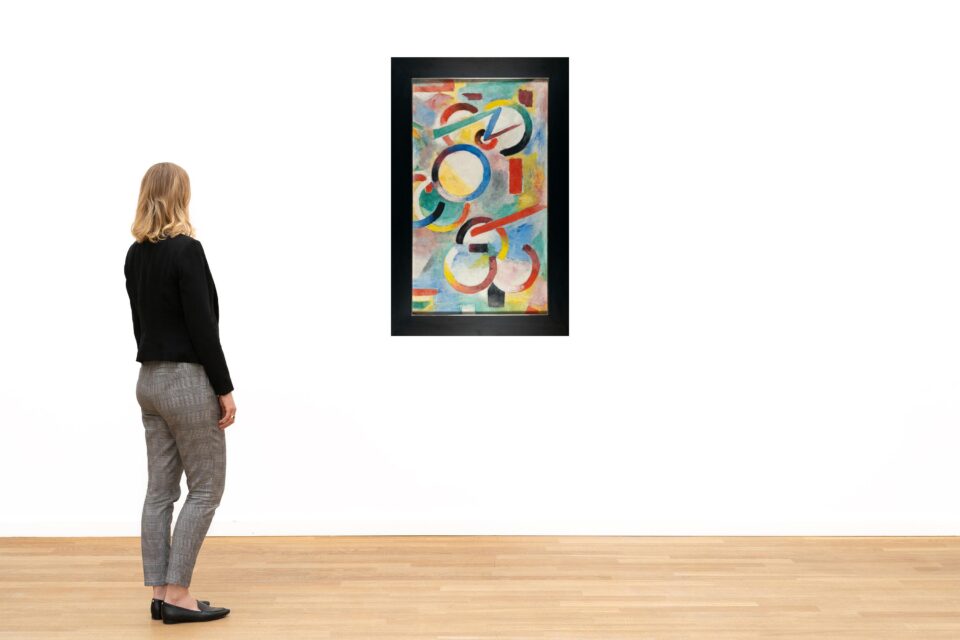Ringlets Circles
Details
Ilk B 32 (Ö 9).
Literature:
Behne, Adolf and Osborn, Max, reviews of the Buchholz exhibition in STURM 1921, in: Eau de Cologne, issue 1, Cologne 1968, with b/w illus. p. 15.
Exhibition:
Erich Buchholz. Gemälde, Aquarelle, Holzbilder, Hundertdritte Ausstellung, Galerie Der Sturm, Berlin 1921, cat. no. 3;
Erich Buchholz, Galerie im Europacenter, Berlin 1966/67, cat. no. 10, with b/w ill. no. 2;
Erich Buchholz. Painter, sculptor, architect, Städtisches Museum, Wiesbaden 1969;
Constructive tendencies. Between the World Wars. From the Carl Laszlo Collection (Basel), Galerie im Taxispalais, Innsbruck 1971, cat. no. 10;
Erich Buchholz. Works from the years 1918 to 1925, Galerie Stolz, Cologne 1985;
Rudolf Jahns and his time, Galerie Stolz, Berlin 2013, no. 13.
Provenance:
Estate of the artist;
Carl Laszlo Collection, Basel, from 1971 at the latest;
Barry Friedman, New York, acquired there by the current owner in 1989;
Private collection, Southern Germany.
Descrizione
– Work from the artist’s early abstract oeuvre, which is very rare on the art market
– The work was shown as early as 1921 in Buchholz’s first solo exhibition at Herwarth Walden’s famous Sturm-Galerie
– Comparable compositions can be found in the collections of the Berlinische Galerie, the Museum of Modern Art New York and the Rothschild Collection in New York
Eberhard Roters wrote about Buchholz in 1964 (Der Kunst in Berlin): “(…) From despair he found his way to abstraction. For him, despair meant renouncing everything that had gone before. (…) Art and cognition are therefore the same thing for Buchholz. For him, art is philosophy, mathematics, physics and cosmology. In his mind, the seven liberal arts of the Middle Ages are combined into a new discipline. But that is why he identifies with the problems of his generation and his time. For, independently of each other and often without knowing about the attempts of others, many young artists worked in the same direction after 1918. (…) Buchholz reports from his own experience that when many Russians, Poles and Hungarians came to Berlin in the 1920s, they were not a little surprised to find very similar artistic endeavours there. (…) The times were turbulent, and Buchholz’s desire to experiment was fuelled by the times. He designed fantastic architectures in which sculptural and architectural elements were combined” (quoted from Eau de Cologne, issue 1, p. 11f.).
* Tutte le informazioni includono la commissione a carico dell'acquirente (27%) senza IVA e senza garanzia. Salvo errori.
** Tutte le informazioni più la commissione a carico dell'acquirente e l'IVA e senza garanzia. Salvo errori.
*** Con riserva: L'offerta è stata accettata al di sotto del limite. L'acquisizione dell'opera potrebbe essere ancora possibile nella nostra vendita post-asta.
R = Le opere d'arte regolarmente tassate
N = Opere d'arte soggette a tassazione differenziata e provenienti da un paese non UE
Non è consentita la riproduzione e la distribuzione privata o commerciale di tutte le illustrazioni delle opere esposte nell'archivio della mostra e dell'asta. Tutti i diritti riservati.







